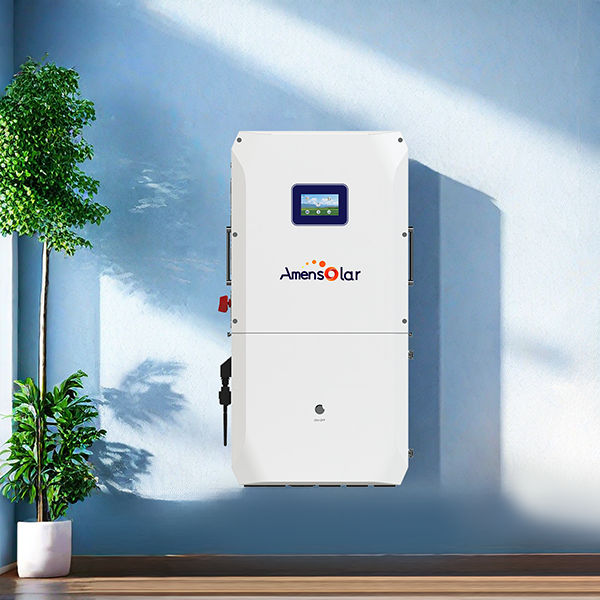An inverter is an electrical device that converts direct current (DC) into alternating current (AC). It is commonly used in renewable energy systems, such as solar power systems, to convert the DC electricity generated by solar panels into AC electricity for household or commercial use.
A hybrid inverter, on the other hand, is designed to work with both renewable energy sources (like solar) and traditional grid power. Essentially, a hybrid inverter combines the functions of a traditional inverter, a charging controller, and a grid-tied system. It enables seamless interaction between solar energy, battery storage, and the grid.
Key Differences
1.Functionality:
①.Inverter: The primary function of a standard inverter is to convert DC from solar panels into AC for consumption. It does not handle energy storage or grid interaction.
②.Hybrid Inverter: A hybrid inverter has all the functions of a traditional inverter but also includes additional capabilities like managing energy storage (e.g., charging and discharging batteries) and interacting with the grid. It allows users to store excess energy produced by solar panels for later use and to manage the flow of electricity between solar panels, batteries, and the grid.
2.Energy Management:
①.Inverter: A basic inverter only uses solar power or grid power. It does not manage energy storage or distribution.
②.Hybrid Inverter: Hybrid inverters provide more advanced energy management. They can store excess solar energy in batteries for later use, switch between solar, battery, and grid power, and even sell excess energy back to the grid, offering greater flexibility and efficiency in energy use.
3.Grid Interaction:
①.Inverter: A standard inverter typically only interacts with the grid to send excess solar power to the grid.
②.Hybrid Inverter: Hybrid inverters offer more dynamic interaction with the grid. They can manage both import and export of electricity from the grid, ensuring the system adapts to changing energy needs.
4.Backup Power and Flexibility:
①.Inverter: Does not provide backup power in case of grid failure. It simply converts and distributes solar power.
②.Hybrid Inverter: Hybrid inverters often come with an automatic backup feature, providing power from batteries in case of a grid outage. This makes them more reliable and versatile, particularly in areas with unstable grid power.
Applications
①Inverter: Ideal for users who only need solar energy and do not require battery storage. It is typically used in grid-tied solar systems where excess energy is sent to the grid.
②Hybrid Inverter: Best for users who want to integrate both solar energy and grid power, with the added benefit of energy storage. Hybrid inverters are especially useful for off-grid systems or those that need reliable backup power during outages
Cost
①Inverter: Generally cheaper due to its simpler functionality.
②Hybrid Inverter: More expensive because it combines several functions, but it offers greater flexibility and efficiency in energy use.
In conclusion, hybrid inverters provide more advanced features, including energy storage, grid interaction, and backup power, making them a great choice for users who want greater control over their energy use and reliability.
Post time: Dec-11-2024









